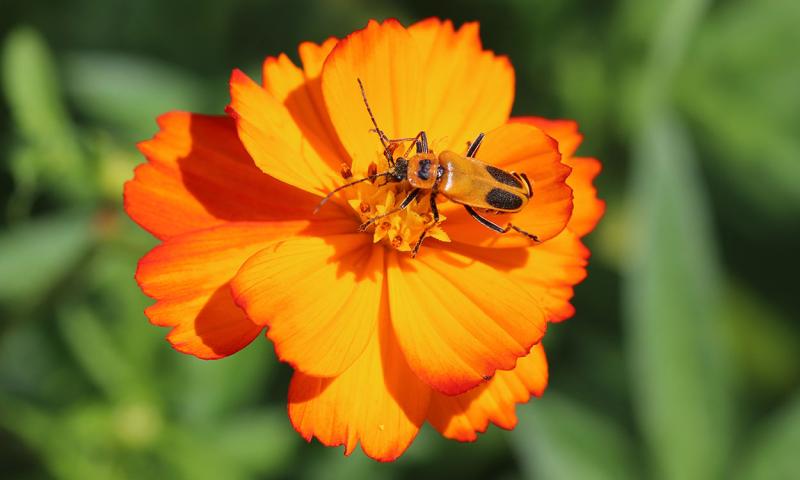
Originally Submitted: September 7, 2021
Flowers in many gardens are currently being visited by soldier beetles. While these orange beetles have a strong preference for flowering plants, they are predators and pollinators and don’t pose a threat to your garden.
Identification of Soldier Beetles
Adult soldier beetles vary in color depending on the species. The most-common species on flowers in South Dakota is the goldenrod soldier beetle, which is orange in color with two black spots near the end of the body on their cloth-like forewings (Figure 1). The adults also have a black spot present on their thorax (segment directly behind the head). These beetles are elongate and are approximately ½ of an inch long. The soldier beetle larvae are worm-like and have a rippled appearance. These larvae are typically a brown or gray color and are covered in small hairs. The larvae can be up to ¾ of an inch long. However, the larvae are rarely observed.
Why Are These Insects Beneficial?
Both the adults and larvae of soldier beetles are predators that feed on other insects. Often, their prey are also common pests, including soft-bodied insects, such as caterpillars and aphids. The adults will wait on a plant for prey. During this time, they may feed on the nectar and pollen of the plant. However, they don’t damage the plant while doing this, and they don’t feed on the flower petals. There is no need to manage soldier beetles – instead, enjoy observing them and the beneficial services they provide when they are present in your garden.


